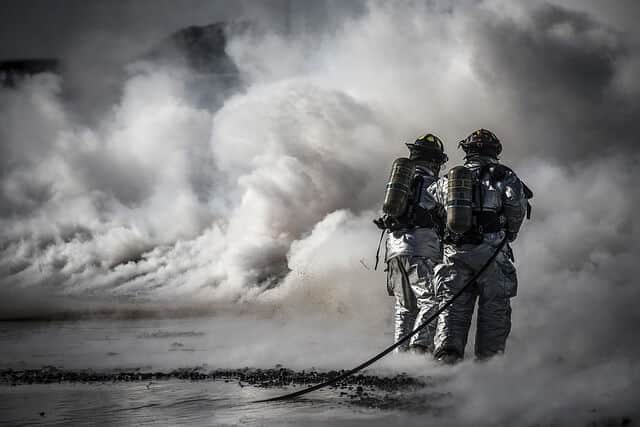
Developed by the National Disaster Management Authority (NDMA) per the Disaster Management Act, of 2005, the NDMP aligns with the Sendai Framework for Disaster Risk Reduction (SFDRR), which emphasizes the need for a proactive approach to disaster management, focusing on reducing risk rather than only responding to disasters.
Also read: National Disaster Response Force (NDRF)
National Disaster Management Plan 2016: The History

- National Disaster Management Act, 2005 – Provided the legal basis for disaster management.
- National Disaster Management Authority (NDMA) – Coordinates activities of disaster management.
- National Policy on Disaster Management (NPDM), 2009 – Institutional mechanisms.
- National Disaster Management Plan (NDMP), 2016 – Aligned with Sendai Framework
Which authority prepared the National Disaster Management Plan 2016?
National Disaster Management Authority (NDMA).
Also read: Crowd Management
National Disaster Management Plan 2016: Salient Features

- Risk Reduction and Preparedness:
- NDMP prioritizes measures for preventing and mitigating disaster risk, with a focus on pre-disaster preparedness and resilience-building across all levels of government and society.
- It identifies multiple types of hazards, such as earthquakes, floods, cyclones, and biological hazards, and details specific plans to reduce risks associated with each disaster type.
- Four Priority Actions Aligned with the Sendai Framework:
- Understanding Disaster Risk: Improving disaster risk awareness, developing databases on risks and vulnerabilities, and promoting scientific research and community awareness.
- Strengthening Disaster Risk Governance: Building effective governance structures at national, state, and local levels for integrated disaster management.
- Investing in Resilience: Emphasis on infrastructure, planning, and implementation of strategies to minimize physical, social, and economic vulnerability.
- Enhancing Disaster Preparedness: Focus on effective response mechanisms, such as early warning systems, emergency operations, evacuation plans, and capacity-building.
- Role of Key Stakeholders:
- The NDMP assigns specific roles to central ministries, state governments, and local bodies. The National Disaster Response Force (NDRF) and State Disaster Response Forces (SDRFs) are identified as key responders.
- It includes the participation of community-based organizations and non-governmental organizations (NGOs) to enhance community resilience and ensure an inclusive approach.
- Use of Technology and Data:
- The NDMP advocates the use of GIS mapping, real-time data collection, and risk assessment technologies to monitor hazards and provide accurate and timely information to communities at risk.
- This technology-driven approach is intended to support quick and effective decision-making in the event of a disaster.
- Post-Disaster Recovery and Rehabilitation:
- It outlines strategies for rehabilitation, reconstruction, and sustainable recovery to help communities return to normalcy after a disaster, incorporating lessons learned into future risk management plans.
- Focus on Climate Change and Vulnerable Populations:
- Recognizing the link between climate change and disaster frequency/intensity, the NDMP emphasizes climate-resilient infrastructure and adaptation.
- It addresses the unique needs of vulnerable populations, including women, children, the elderly, and economically disadvantaged groups.
Sendai Framework for Disaster Risk Reduction (SFDRR)
The Sendai Framework for Disaster Risk Reduction (SFDRR) is an international agreement adopted in March 2015 at the Third UN World Conference on Disaster Risk Reduction in Sendai, Japan.
It aims to reduce disaster risks and losses in lives, livelihoods, and health, as well as the economic, physical, social, cultural, and environmental assets of persons, businesses, and communities.
The framework covers the period from 2015 to 2030 and serves as a successor to the 2005 Hyogo Framework for Action.
Key Goals and Priorities
The SFDRR sets out four main priorities and seven global targets to guide disaster risk reduction efforts globally. Its approach emphasizes disaster risk management over simple disaster response and calls for a multi-dimensional approach involving all sectors and levels of government.
Priorities for Action
- Understanding Disaster Risk:
- Emphasis on collecting data and knowledge about disaster risks to understand hazards, vulnerabilities, and exposure, which are essential for effective risk assessment and informed decision-making.
- Strengthening Disaster Risk Governance:
- Promoting strong disaster risk governance at all levels by involving stakeholders, setting clear roles and responsibilities, and fostering accountability. The goal is to ensure a coordinated approach across sectors.
- Investing in Disaster Risk Reduction for Resilience:
- Prioritizing investments in disaster risk reduction to enhance resilience. This includes strengthening infrastructure, promoting sustainable urban planning, and using environmental management as a tool to prevent hazards.
- Enhancing Disaster Preparedness for Effective Response and Recovery:
- Focusing on preparedness to ensure efficient response and build back better in recovery, rehabilitation, and reconstruction phases. It includes establishing early warning systems and developing pre-disaster planning.
Global Targets
The framework establishes seven global targets to measure progress by 2030:
- Substantially reduce global disaster mortality.
- Significantly decrease the number of affected people.
- Reduce direct disaster-related economic loss relative to GDP.
- Reduce disaster damage to critical infrastructure and disruption of basic services.
- Increase the number of countries with national and local disaster risk reduction strategies.
- Enhance international cooperation for developing countries to support implementation.
- Increase the availability of and access to early warning systems and disaster risk information.
Conclusion
The NDMP has set a framework for comprehensive disaster management, helping India transition from a reactive to a proactive disaster management strategy. It continues to serve as a foundational plan guiding the country’s approach to mitigating and managing disasters across all levels of society.
Frequently Asked Questions (FAQs)
Q. What is the Hyogo Framework for Action 2005?
Ans: The Hyogo Framework for Action (HFA) was a global blueprint for disaster risk reduction efforts with a ten-year plan, adopted in January 2005 by 168 Member States of the United Nations at the World Conference on Disaster Reduction.
Q. What is the Sendai Framework?
Ans: The Sendai Framework outlines seven global targets to guide and against which to assess progress. Sendai Framework Indicators. A set of 38 indicators was identified to measure global progress in the implementation of the Sendai Framework for Disaster Risk Reduction. Sendai Framework Targets and Priorities.





I want update from clearias
This is wonderfully crisp and specific. Thank You ClearIAS for such notes.